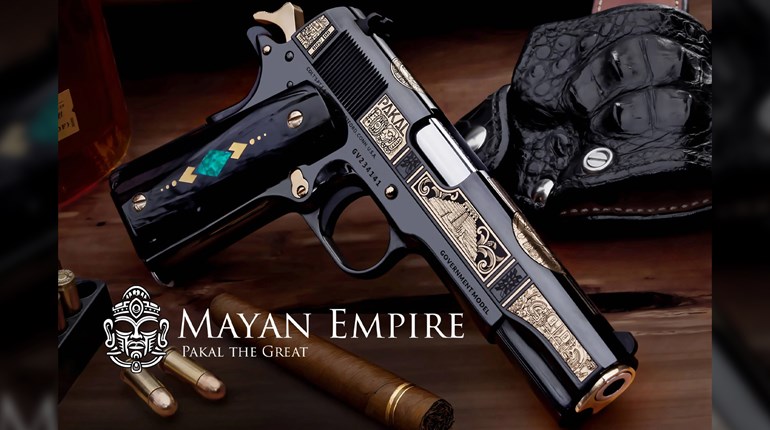** When you buy products through the links on our site, we may earn a commission that supports NRA's mission to protect, preserve and defend the Second Amendment. **


While the arched mainspring housing adds authenticity, shooters may experience hammer bite due to higher hand placement and a narrow grip-safety tang.
A decision was made to take a different route and employ some proportional design techniques similar to what John Browning did when he designed the .380 ACP cartridge. Proportionally speaking, the .380 ACP is 78 percent of the size of the .45 ACP cartridge—in practically every dimension. As a result, Browning’s answer to the 1911 anniversary was a baby 1911, 85 percent the size of a full-size 1911. And that’s not all. The company decided to chamber the new diminutive pistol in .22 LR.
This project began in 2008, and I was lucky enough to test one of the first Browning 1911-22s when it was introduced in 2011. It was a very cool little gun (except its trigger, which was deplorable). I almost bought it, but was told a Commander-size version was in the works. Being the Commander devotee I am, I decided to wait, and I’m glad I did. After several months and more than 500 rounds, the 1911-22 Compact has become one of my favorites, and the trigger breaks crisply at 3.75 pounds.

Since the Browning 1911-22 Compact is blowback operated, a barrel link is uneccessary and not present.
Sheriff Jim Wilson, Gunsite Instructors Il Ling New and Dave Starin, and I pushed 200 rounds through the miniature 1911. The only problems occurred when Starin allowed his thumb to apply slight pressure against the slide, which caused a malfunction, and again when New failed to fully depress the grip safety. Not to blame the Gunsite instructors, but these were operator-induced stoppages. Still, they need to be noted, because some shooters prefer to ride the slide with their thumb, and some might find the diminutive grip safety difficult to depress fully without conscious thought.

Generous finger tabs make loading the 10-round magazine easy.
Even though the shotshell load wouldn’t cycle the action, it performed great on target. Patterns from the 1911-22 Compact at distances of 6 and 7 feet averaged roughly 5 inches with a predominate amount of shot contained in the center of the target. On average, 30 pellets were contained within a 1.5-inch center cluster. This load makes the little Browning great for the trail where venomous reptiles live.
As for accuracy, at 21 yards from a rest the pistol averaged a bit more than 2-inch groups across five different loads—not bad considering this involved the firing of 25, five-shot groups. It’s also comparable to what I’ve found to be the average accuracy for duty guns when fired from a rest at 25 yards. Why did I test at 21 yards? Well, 21 yards is 85 percent of 25 yards, which is the distance we usually test duty-size handguns like a 1911 Commander.
Complaints? I’ve got two.
First, the sights. Though proportional in size for a pistol that represents a 15-percent size reduction, they are small. If you have normal vision this shouldn’t be a concern; however, if you have aging eyes like me, you might struggle. The front sight is only about 0.1 inch high and wide, and the rear notch is slightly less. Since I’m buying this pistol, I plan on painting the front sight and making the rear notch wider and deeper.

Generous finger tabs make loading the 10-round magazine easy.
But why might you want one? I can think of several reasons: It makes a great around-the-barn gun that can be used on vermin and snakes. It could also be used on small game. Plus, it’s a perfect training platform for any new shooter or youngster looking to carry or shoot a 1911. Most importantly, this little pistol is a lot of fun to shoot.
In fact, it might be the most fun pistol I own, and I’ve been carrying it around the range here at Shadowland every day. I know it’ll be with me when I head to the field too. Like a good-looking woman who can also cook, this pistol is just too cute and too useful to leave at home. That sounds just like a 1911 to me, so maybe I was wrong and this is just another one of the greatest pistols ever made.

null




































